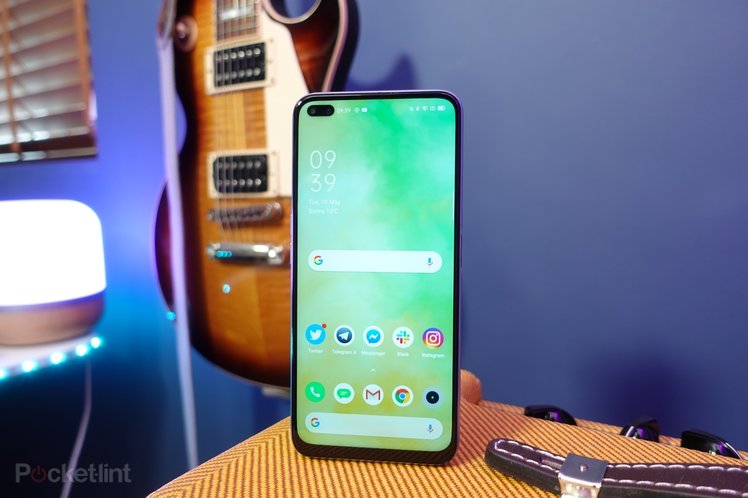
When it first launched as a sub-brand of Oppo, the point of Realme’s existence seemed ultimately similar to what Honor’s purpose is alongside Huawei: it’s there to offer more affordable, yet very capable phones for a younger demographic. Or that’s how the companies like to think about it.
That means Realme uses a lot of the same hardware technology and virtually identical software to Oppo. But more importantly, it often means making high-end capabilities available for a much lower price than Oppo’s flagships. Sure, there might be some trade-offs, but the most recent wave of Realme devices are very enticing.
The X3 SuperZoom is one such example. It comes equipped with a fast refresh-rate display, periscope zoom camera, and a powerful processor – all wrapped up in a device which won’t cost the earth. It’s essentially the follow up to the X2 Pro, which has refined a few bits along the way.
Understated looks
- Dimensions: 163.8 x 75.8 x 8.9mm / Weight: 202g
- Glass front and back, plastic frame
- Water resistant, but no IP rating
At arm’s length it wasn’t initially apparent where Realme had made cutbacks in order to keep the build costs down with the X3 SuperZoom. Both the front and back are covered in glass, with the rear featuring a multi-layer finish similar to what you might expect from a more expensive flagship.
Our test unit is Arctic White, which not only reflects a subtle coloured gradient in the right light, but also has a soft matte frosted finish, similar to the green OnePlus 8. It’s smooth to the touch and feels fantastic in the hand because the curved edges help it sit well in the palm.
The front is covered in a mostly flat piece of glass. There aren’t any display curves, which is not only cost effective, but we think is actually better for day-to-day use and viewing. There’s less chance of accidental touches, or distortion of light and colour near the screen’s edges.
It’s when you look up and around the edges around the sides of the phone that you start to see some cost-cutting. Firstly, the frame is made from plastic. There’s no high-end aluminium or steel here, which is no surprise. There’s also a physical fingerprint sensor built into the power button on the side – which hasn’t been massively reliable in our initial testing – not the in-screen fingerprint scanners we’ve become accustomed to using. (Thankfully, there is a camera based facial recognition option to fall back on if necessary).
It’s not an especially small or slim phone, but it’s not big and bulky either. Thanks to the shape of the back and the relatively slim, rounded edges, it feels comfy when held in the one hand, and the skinny bezels all the way around the display help it look expansive.
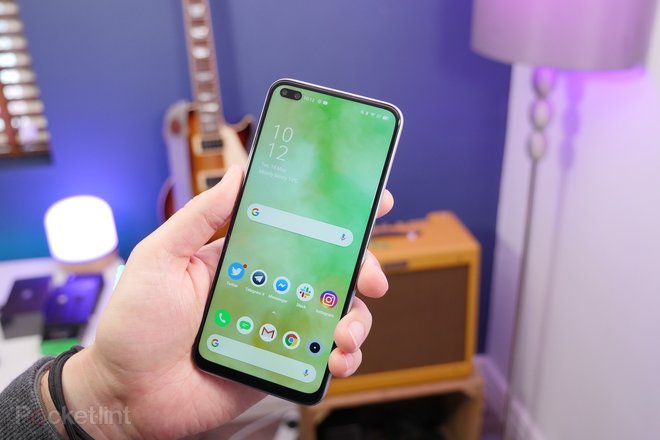
Granted, the bottom bezel is chunkier than the other parts of the display’s frame, but it still has an almost edge-to-edge look to it, and it completely dominates that front surface area. And while it hasn’t got an official IP-rated certification, Realme has said that its phone has got some water-resistance. Components are protected inside by using silicone gel around all the holes and ports, and also gaps around the SIM slot and around the internal battery are filled with a waterproof foam ring. That means it should comfortably survive being caught in the rain.
Fast refresh
- 6.6-inch FHD+ LCD panel
- 2400 x 1080 resolution
- 20:9 aspect ratio
- 120Hz refresh
- Dual punch-hole front camera
We’ve seen an increasing number of phones tout fast refresh-rate screens, as devices try to improve on the feel of smoothness and speed in their user interfaces, and make gaming more responsive. Like many of the current crop of displays, the Realme X3 SuperZoom features a 120Hz panel, which means a maximum frame rate of 120 frames per second.
Of course, there’s not much in the way of movie or gaming content that’s anywhere close to that really, and so Realme is using similar motion smoothing technology to Oppo and OnePlus to upscale 30fps footage to seem smoother.
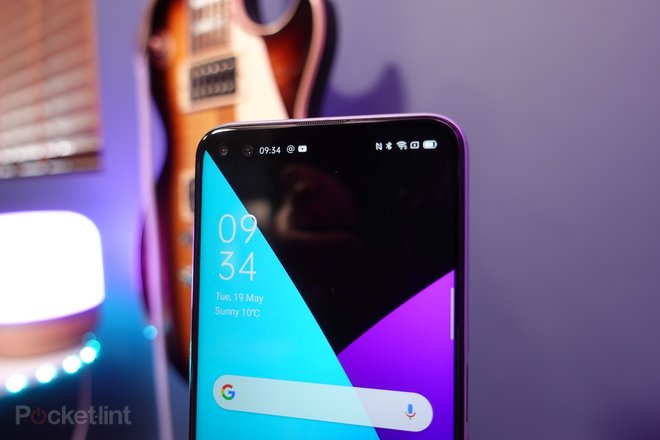
At Full HD+ resolution, Realme’s 6.6-inch panel isn’t the sharpest we’ve ever seen, but having used it for a couple of days already, we can’t see that being an issue at all. It seems plenty sharp enough overall, with individual pixels being almost impossible to distinguish with the naked eye. Similarly, text and details look smooth and crisp from arm’s length.
The panel is really vibrant, bright and has high contrast. It’s only looking at a completely black image side-by-side next to an AMOLED phone that you’ll see this is an LCD screen. The blacks aren’t as inky and dark, but for an LCD panel they’re really dark. However, we’ve spotted some ‘haloing’ (outer glow) around white text on dark backgrounds.
Last year’s flagship power
- Snapdragon 855 Plus processor
- 8GB/12GB RAM (LPDDR4x)
- 128GB/256GB UFS 3.0 storage
- 4,200mAh battery, 30W fast-charging
Now it may not have the latest Qualcomm Snapdragon 865 processor or 5G capabilities, but the X3 SuperZoom has enough power to keep even the most demanding user happy. It’s got a Snapdragon 855+ chip inside it, which is the upgraded version of the 855 launched in late 2019 on devices like the OnePlus 7T and 7T Pro. It was more than enough then, and will be more than enough now – and for the next couple of years.
If that wasn’t enough, Realme has used speedy RAM and storage hardware too. It’s got LPDDR4x and UFS 3.0, which – again – is OnePlus territory. Without going into too much technical detail, it essentially means your apps and games will run smooth, and anything you download and install will do so quickly. Plus, with up to 12GB RAM and 256GB storage, you get plenty of it too.
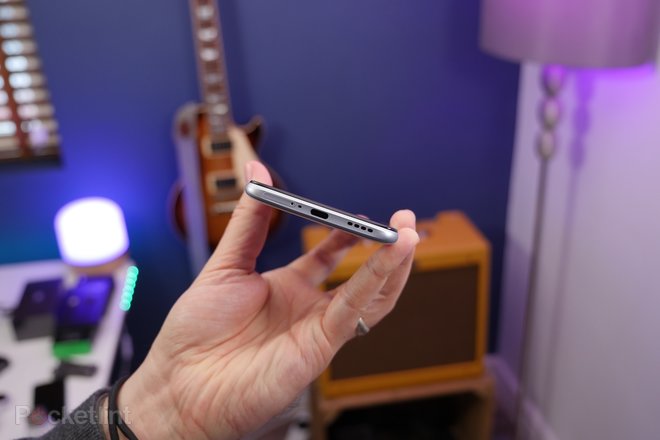
Then there’s the battery. With a capacity of 4,200mAh, the X3 SuperZoom should prove strong enough to get through busy days without much effort. That’s if previous OnePlus, Oppo and Realme phones are anything to go by – as we’re yet to give it a proper full-on testing as our day-to-day device, but will be updating this article when we have.
There’s also the 30W Dart Flash Charge power adapter, which is pretty quick to top-up the power (just not up to the 65W speeds of Super Dart/Super VOOC 2.0, reserved for Oppo’s higher-end models). This Dart Charge should get the X3 SuperZoom’s flat battery up to 50 per cent within half an hour without an issue, and that’s kind of life-saving when you’re in a rush and you’ve forgotten to plug your phone in.
Super zoom camera kit
- 64MP primary f/1.8 26mm camera
- 8MP ultra-wide f/2.3 15.7mm camera
- 8MP telephoto periscope 5x optical zoom camera
- 2MP Macro camera
- Dual 32MP wide and 8MP ultra-wide selfie camera
It’s in the camera department where you get a stronger sniff of that Oppo aroma. As well as its 64-megapixel primary sensor – which oversamples and then pixels bins down to a 16-megapixel output – you get a periscope zoom lens that offers 5x optical zoom. Like Oppo’s Reno 10x Zoom and the Find X2 Pro, it works by organising the lens elements horizontally within the body, and then has a 90-degree prism pointing light through them to the sensor.
The other two lenses in the quad camera setup on the SuperZoom are the 8-megapixel ultra-wide and the 2-megapixel macro lens. The former offers a much wider 15.7mm (equivalent) field of view, while the macro sensor lets you get really close-up to objects and focus. Or, at least, that’s the theory.
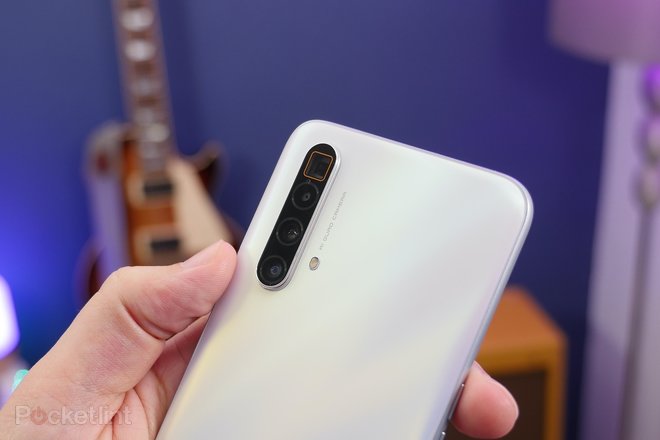
In our experience, these low-resolution macro sensors haven’t really proved to be very useful, primary because the resulting images aren’t that good. We’ll reserve judgement on the Realme until we have more time to test.
In addition to those sensors on the back, Realme opted for a dual selfie camera system on the front – and that means the ability to switch between regular and ultra-wide shots, helping you get more of the background, or more people into the scene.
